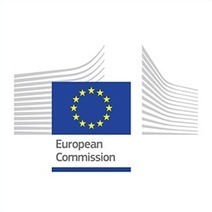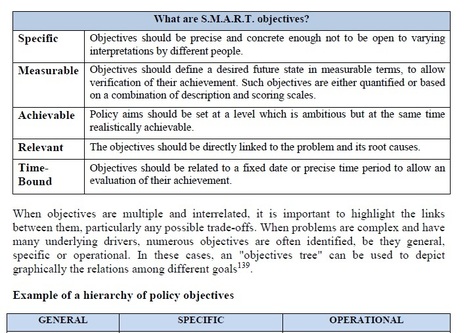I. General principles of better regulation
- TOOL #1.Principles, procedures & exceptions
- TOOL #2.The Regulatory Fitness Programme and the REFIT Platform
- TOOL #3.Role of the Regulatory Scrutiny Board
- TOOL #4.Evidence-based better regulation
- TOOL #5.Legal basis, subsidiarity and proportionality
- TOOL #6.Planning and validation of initiatives
- TOOL #7.Drafting roadmaps, evaluation roadmaps and inception Impact assessments
II. How to carry out an impact assessment
- Introduction
- TOOL #8.What steps should I follow for an impact assessment?
- TOOL #9.When is an impact assessment necessary?
- TOOL #10.Financial programmes and instruments
- TOOL #11.Social partner initiatives
- TOOL #12.Format of the impact assessment report
- TOOL #13.How to undertake a proportionate impact assessment
- TOOL #14.How to analyse problems
- TOOL #15.Risk assessment and management
- TOOL #16.How to set objectives
- TOOL #17.How to identify policy options
- TOOL #18.The choice of policy instruments
III. Identify impacts in impact assessments, evaluations and fitness checks
- TOOL #19.Identification / screening of impacts
- TOOL #20.Sectoral competitiveness
- TOOL #21.Research & innovation
- TOOL #22.The "SME test"
- TOOL #23.Competition
- TOOL #24.Internal market
- TOOL #25.Prevention of fraud
- TOOL #26.External trade and investment
- TOOL #27.The digital economy and society & ICT issues
- TOOL #28.Fundamental rights & human rights
- TOOL #29.Employment, working conditions, income distribution, social protection & inclusion
- TOOL #30.Education and training, culture and youth (ETCY)
- TOOL #31.Health impacts
- TOOL #32.Consumers
- TOOL #33.Territorial impacts
- TOOL #34.Developing countries
- TOOL #35.Resource efficiency
IV. Implementation, transposition & preparing proposals
- TOOL #36. The implementation plan
- TOOL #37. Transposition checks
- TOOL #38. Drafting the explanatory memorandum
- TOOL #39. Guidance documents containing legal interpretation of EU law
- TOOL #40. Delegated and implementing acts
V. Monitoring the application of an intervention
- TOOL #41. Monitoring arrangements and indicators
- TOOL #42. Legal provisions on monitoring and evaluation
VI. Evaluations and fitness checks
- Introduction
- TOOL #43. What is an evaluation and when is it required?
- TOOL #44. Planning & the 5 year rolling evaluation plan
- TOOL #45. How to undertake a proportionate evaluation
- TOOL #46. Designing the evaluation
- TOOL #47. Evaluation criteria and questions
- TOOL #48. Conducting the evaluation
- TOOL #49. The staff working document for evaluation
- TOOL #50. Disseminating the evaluation findings
- TOOL #51. Follow-up action plans
- TOOL #52. "Back-to-back" evaluations and impact assessments
VII. Stakeholder consultation
- introduction
- TOOL #53. The consultation strategy
- TOOL #54. Conducting the consultation activities and data analysis
- TOOL #55. Informing policymaking - the synopsis report
- TOOL #56. Stakeholder feedback mechanisms
VIII. Methods, models and costs and benefits
- TOOL #57. Analytical methods to compare options or assess performance
- TOOL #58. Typology of costs and benefits
- TOOL #59. Methods to assess costs and benefits
- TOOL #60. The standard cost model for estimating administrative costs
- TOOL #61. The use of discount rates
- TOOL #62. The use of analytical models and methods
- TOOL #63. Multi-criteria analysis
- TOOL #64. Life cycle analysis
- TOOL #65. How to use visual aids and present quantitative data



 Your new post is loading...
Your new post is loading...









Un conocido de peso: los sesenta y cinco instrumentos con los que cuenta la Caja de Herramientas de las Directrices para la Buena Regulación de la Comisión Europea, con el enlace a la fuente original de cada una de ellas.
El término regulación incluye todas las facultades de intervención de los poderes públicos (singularmente, los planes estratégicos que lleva a cabo, sus políticas), y no solo la normativa.
La panoplia de herramientas que recomienda la Comisión Europea lo acredita bien a las claras.
En https://ec.europa.eu/info/law/law-making-process/planning-and-proposing-law/better-regulation-why-and-how/better-regulation-guidelines-and-toolbox/better-regulation-toolbox_en, encontrará también la posibilidad de descarga del documento de la caja de herramientas completo,(540 páginas), con detalladas explicaciones de las 65 herramientas.